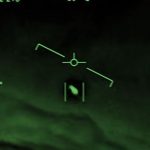Key Takeaways:
- A groundbreaking study proposes a radical theory about the formation of our solar system.
- Suggests it may have originated inside a dense shell of a colossal bubble within a Wolf-Rayet star.
- Addresses a longstanding mystery regarding the solar system’s unique chemical composition.
- Wolf-Rayet stars, known for their intense heat and powerful stellar winds, play a crucial role in this hypothesis.
- The theory offers a potential explanation for the abundance of aluminum-26 and scarcity of iron-60 in the early solar system.
Astronomers have long grappled with the enigmatic origins of our solar system, which emerged roughly 5 billion years ago from the remnants of earlier stellar generations.
While the prevailing belief posits a nearby supernova triggered its formation, a recent study in the Astrophysical Journal has proposed a startling alternative. According to this research, our solar system might have taken shape within the dense confines of a colossal bubble enveloping a mammoth star.
This not only provides a captivating narrative for its inception but also sheds light on a persistent puzzle surrounding its chemical composition.
The unconventional theory revolves around a specific type of star, the Wolf-Rayet star, renowned for burning with unparalleled intensity. These stellar giants also boast formidable stellar winds, particularly potent as they shed their outer layers in the twilight of their existence.
This shedding process gives rise to densely shelled bubbles, creating fertile ground for the birth of new stars. Researchers posit that our solar system could have emerged within one such bubble, nestled amid a substantial reservoir of gas and dust.
Nicolas Dauphas, co-author and professor at the University of Chicago, underscores the bubble’s potential as a stellar nursery, emphasizing the significant volume of trapped material.
The study estimates that this unique process could account for the genesis of a remarkable 1 to 16 percent of stars akin to our Sun. While this hypothesis may initially appear extravagant, it gains credibility by addressing a longstanding discrepancy in the early solar system’s isotopic composition.
Prior examinations of meteorite samples have unveiled an abundance of aluminium-26 juxtaposed with a scarcity of iron-60, a baffling incongruity given both isotopes are products of supernova explosions.
This paradox propelled researchers towards Wolf-Rayet stars, prolific producers of aluminium-26 but devoid of iron-60 emissions. The hypothesis posits that aluminium-26, propelled from the star, attaches to dust grains, ultimately penetrating the bubble’s shell.
Here, most of these particles are obliterated, ensnaring the aluminium within the enclosure. Over time, the bubble succumbs to gravity, collapsing and potentially birthing our solar system.
While this innovative theory is far from widely accepted, its ability to elucidate the solar system’s distinct chemical makeup paves the way for future investigations.


